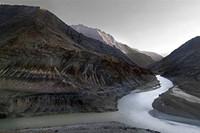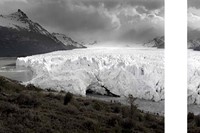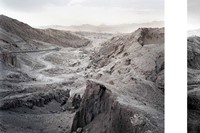Two photography books from the German art publisher Hatje Cantz crossed our (sustainably sourced birch) desk recently, each showing two very different kinds of landscape. Leafing through them side by side brings into focus just how massively we, the
Two photography books from the German art publisher Hatje Cantz crossed our (sustainably sourced birch) desk recently, each showing two very different kinds of landscape. Leafing through them side by side brings into focus just how massively we, the human species, are able to change and manipulate the planet to suit our needs.
The first is Luca Campigotto’s My Wild Places, a mix of colour and monochrome images of various landscapes from around the world — plus subtle human intervention into them. Apart from the photographer’s own shadow, the works are virtually all people less; with empty space and silent relics filling each page instead. We see icebergs floating in a dark blue bay, towering glaciers, deserts baking under the sun and frozen under snow, and river snaking through desolate badlands. Into these wild spaces, as if to show how easy it is to change them, we see access roads appearing, a lone telephone pole, monolithic sculptures, cave homes carved from the rock — more than two millennia of humans marking our mark on the earth.
Change can, of course, be much swifter, as Nadav Kander’s The Long River demonstrates. Winner of the 2009 Prix Pictet, the series shows the colossal scale of construction and destruction along the Yangtze in the lead up to the construction of the Three Gorges Dam. Giant bridges tower overhead as new apartment buildings rise up, and unlike Campigotto’s book we see firsthand how people are coping with such changes — something we may all have to get used to as the planet begins to change beneath us.
Luca Campigotto’s work is on show at the Museo Fortuny, Venice, until January 9, 2011. Both books are published by Hatje Cantz.



